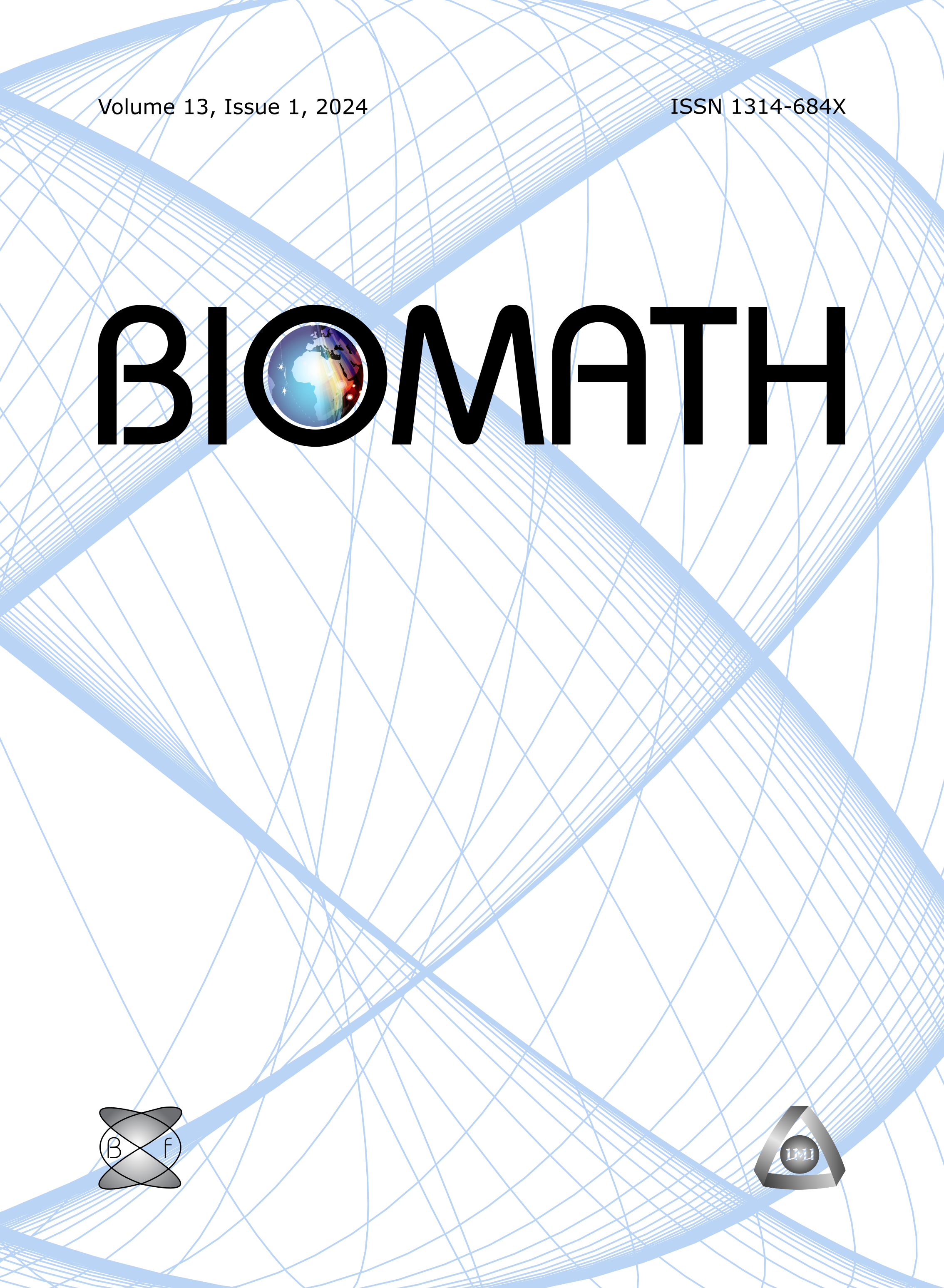Growth in a Turing Model of Cortical Folding
DOI:
https://doi.org/10.11145/j.biomath.2012.09.252Keywords:
cortical folding, morphology, neurobiology, Turing systemAbstract
The brain's cerebral cortex is folded into many gyri (hills) and sulci (valleys). Little is known about how the cortex folds or why the folds are located where they are. We have developed a spatio-temporal mathematical model of cortical folding to address this question. Our model utilizes a Turing reaction-diffusion system on an exponentially growing prolate spheroidal domain. This domain approximates the shape of the lateral ventricle (LV) during cortical development. The Intermediate Progenitor Model (IPM) of cortical folding states that regional patterning of self-amplication of intermediate progenitor cells (IPCs) in the subventricular zone of the LV corresponds with the formation of cortical folding. As self-amplication of IPCs is genetically controlled via chemical gradients, a Turing system is a logical choice to create a mathematical representation of the IPM. A growing domain model of cortical folding may be more realistic than previous static domain models of cortical folding since it incorporates the growth that naturally occurs as the brain develops. By comparing patterns generated by our growing prolate spheroid Turing system with those generated by a static prolate spheroid Turing system, we show that the addition of growth causes a significant change in system behavior; the system produces transient patterns instead of converging to one final pattern. Our model illustrates the importance of including growth in a model of cortical folding and can be utilized to explain certain human diseases of cortical folding.Downloads
Published
Issue
Section
License
The journal Biomath is an open access journal. All published articles are immeditely available online and the respective DOI link activated. All articles can be access for free and no reader registration of any sort is required. No fees are charged to authors for article submission or processing. Online publications are funded through volunteer work, donations and grants.
Authors who publish with this journal agree to the following terms:
- Authors retain copyright and grant the journal right of first publication with the work simultaneously licensed under a Creative Commons Attribution License 4.0 that allows others to share the work with an acknowledgement of the work's authorship and initial publication in this journal.
- Authors are able to enter into separate, additional contractual arrangements for the non-exclusive distribution of the journal's published version of the work (e.g., post it to an institutional repository or publish it in a book), with an acknowledgement of its initial publication in this journal.
- Authors are permitted and encouraged to post their work online (e.g., in institutional repositories or on their website) prior to and during the submission process, as it can lead to productive exchanges, as well as earlier and greater citation of published work (See The Effect of Open Access).


